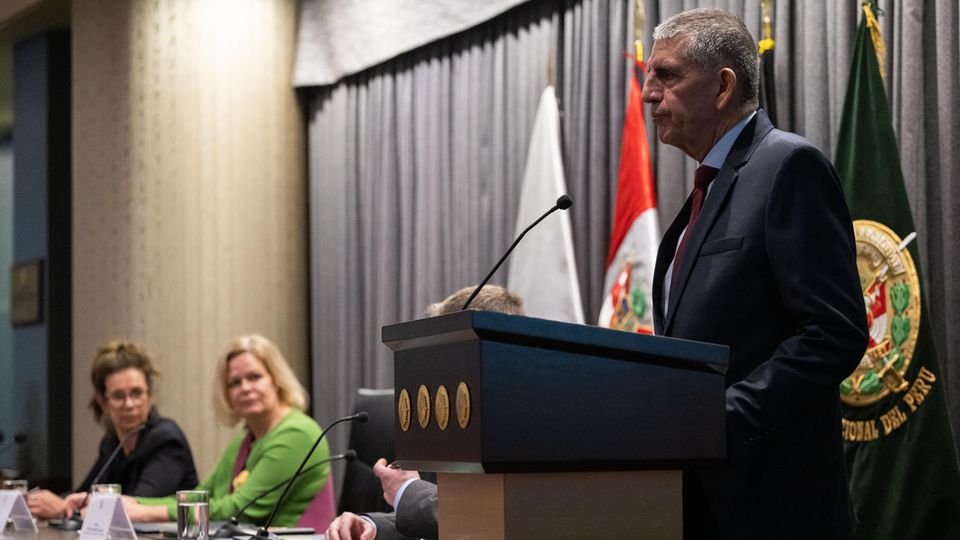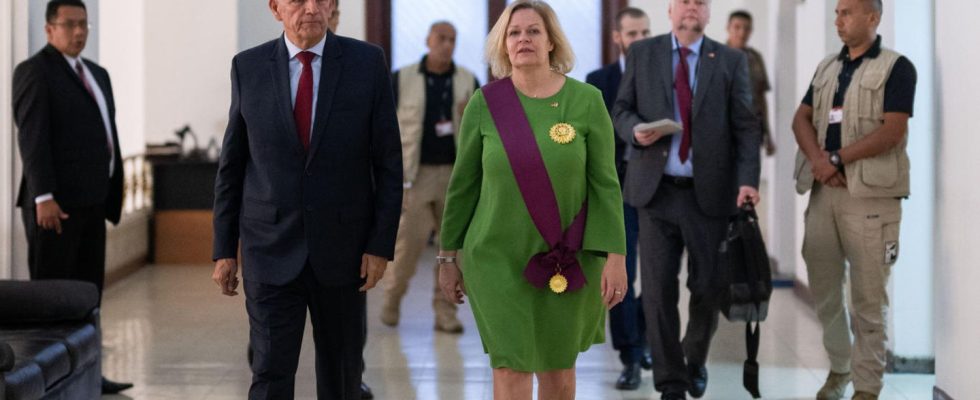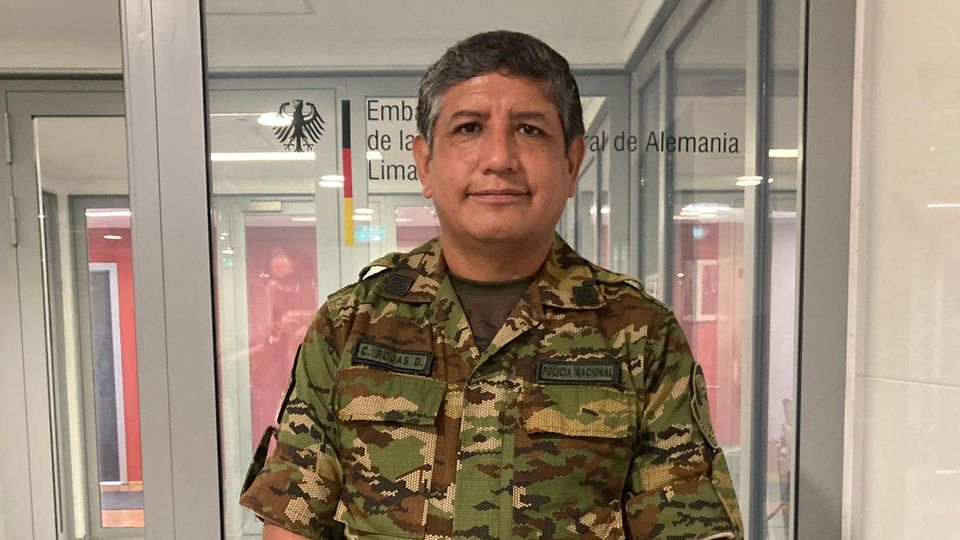On site
Nancy Faeser in South America
With Peru against the drug trade: Anyone who does coke must bear responsibility for it
Federal Minister of the Interior Nancy Faeser and her Peruvian counterpart Víctor Torres Falcón
© Laurin Schmid / BMI
In Peru, Federal Interior Minister Nancy Faeser receives a medal. They want to remind Germans that the fight against drugs should not only be left to the countries of origin.
At the beginning, a brass band plays the national anthems, including the German one, and the media representatives and guests present rise from red folding chairs, like those you see in the cinema. A curious spectacle that should perhaps impress the German Interior Minister. Apparently it was not discussed with your delegation. Faeser decides to smile, at least she can announce the “beginning of a wonderful collaboration.”
Nancy Faeser and her Peruvian counterpart signed a declaration of intent in the capital. They want to work more closely together in the fight against international drug trafficking. In addition, negotiations on a security agreement should begin soon. “For me, Peru is a central partner in the fight against drug-related crime,” says Faeser.
Of course you can say it that way too.
Cleaning the door in the anti-drug fight
Peru is one of the most important countries of origin for cocaine and is the world’s second largest producer and exporter of the drug after Colombia. A large part of Peruvian production ends up in Europe. Gateways are Belgium, the Netherlands – and Germany.
The Interior Minister will travel to four countries in South America within seven days (the star reported). Cleaning the door in the international anti-drug fight. But Faeser’s visit to Lima is particularly relevant; there is a lot at stake here, literally. So what concrete support can she bring?
Apparently not enough. At least that’s what Faeser’s Peruvian counterpart Víctor Torres Falcón suggests. The joint agreement contains many good intentions, such as closer cooperation in the exchange of information and police work, but practically no tangible material or financial help. According to reports, there were voting problems shortly before the signing.
As you know, coca is used to make cocaine.
What does Peru’s interior minister expect? When asked about this, Torres Falcon first praises the cooperation with the USA. With their help, coca plants were destroyed on 25,000 hectares. Nevertheless, according to the Interior Minister, it must be noted that more and more cultivated areas are being created. “We need the help and support of our partner country Germany,” says Víctor Torres. “As you know, coca is made into cocaine.” A subtle tip against the German guests?

Peru’s Interior Minister Víctor Torres Falcón
© Laurin Schmid / BMI
Although Peru is a country of origin for cocaine, it is not a country of consumption – this is what we hear again and again in conversations with experts. The local producers earn just enough to live on cocaine; the big business is made with export and sales, especially in Europe, where demand is increasing. In drastic words: coke is done somewhere else – and anyone who does coke has to also bear the consequences.
Faeser also dutifully emphasizes that it also depends on the “demanding countries” so that no doubts arise about their own sense of responsibility. Within a year, the seized quantity that was shipped from South America to Germany rose from 20 to 35 tons. According to the Federal Criminal Police Office (BKA) sevenfold.
A dynamic market
César Rojas Duránd, 53, is very familiar with the numbers. The friendly man in Flecktarn is a commander in the Peruvian police’s drug unit (Dirandro) and heads the analysis department. According to Rojas Duránd, around 870 tons of cocaine were produced in Peru in 2022. Around 80 percent of production ended up in Europe.
He speaks of a dynamic market. Demand is currently increasing. Between 2015 and 2022, the area under coca cultivation more than doubled, from around 40,000 to 95,000 hectares. Especially since export and trade are the most lucrative work steps. On average, a kilogram of cocaine in Peru costs between 1,200 and 1,300 US dollars. The same amount brings around 45,000 US dollars (approx. 41,500 euros) in Europe.
A tempting business, with many small cells and laboratories springing up in Peru to make a profit. There are no large Peruvian cartels like those in Colombia. But the smaller-scale cocaine production makes combating it more difficult.
“Great honor” for Nancy Faeser
There is great interest in closer cooperation with Germany and Europe. Also out of concern that the USA could withdraw from the anti-drug fight in Peru. The cocaine in the USA comes mainly from Colombia, explains Commander Rojas Duránd, only one percent comes from Peru. There is also a fentanyl crisis simmering in the United States. The US focus in the anti-drug fight could shift accordingly. “That’s why it’s important that Interior Minister Faeser is here,” says César Rojas.
And so back to the press conference, at which Faeser praised the partnerships between the countries of origin, transit and destination. “That is why I am here.” But she also wants to thank her for a “great honor” that she received just a few hours earlier. The Federal Minister of the Interior was awarded El Sol del Perú, the Order of the Sun, by President Dina Boluarte. The shiny gold badge and purple sash, only awarded for special achievements, make Faeser look as if she had just won a Miss pageant. Advance praise for the agreed collaboration? The German hadn’t expected that either.




